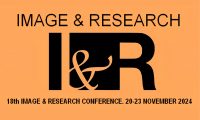-
Join the
Digital Meets Culture
Open Newsroom! If you have interesting news and events to point out in the field of digital cultural heritage, we are waiting for your contribution.
If you have interesting news and events to point out in the field of digital cultural heritage, we are waiting for your contribution.
-
Free text
-
-
Upcoming events
-
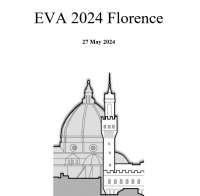 the project is part the conference organized at Grand Hotel Minerva, Florence (Italy) on 27 May 2024
the project is part the conference organized at Grand Hotel Minerva, Florence (Italy) on 27 May 2024EUreka3D project was accepted for a paper and presentation in the prestigioius annual conference EVA Electronic Imaging and the Visual Arts, organised in Florence by Professor Vito Cappellini, University of Florence. The main topics this year include: – European Commission … Continue reading →
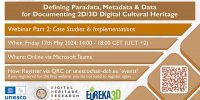 online, 17th May 2024 h. 14 CET
online, 17th May 2024 h. 14 CETThis webinar in two parts brought together professionals from the spectrum of Digital Cultural Heritage practice to share their experiences of using and working with paradata seeking to lay down a common understanding of paradata as a first step towards … Continue reading →
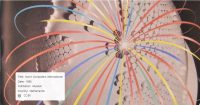 mapping European data infrastructures that accept 3D datasets of cultural heritage for deposit
mapping European data infrastructures that accept 3D datasets of cultural heritage for depositThe Time Machine Organisation in collaboration with the Europeana Initiative have developed a survey seeking to better understand the existing landscape of digital European data infrastructures facilitating the storage of 3D cultural heritage datasets/digital objects. The questions address various topics … Continue reading →
Area: digital heritage

The aim of this special issue is to solicit interdisciplinary studies about the complex phenomenon that takes place during the aesthetic and synesthetic involvement of a human observer in the perception of Cultural Heritage and art mediated by virtual and … Continue reading
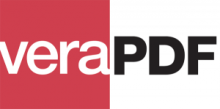
The latest version of veraPDF is now available to download. veraPDF is an open source PDF/A validator, and version 1.10 marks the first release of veraPDF as part of the Open Preservation Foundation’s (OPF) reference toolset. The latest version of veraPDF is now available to download. veraPDF is an open source PDF/A validator, and version 1.10 marks the first release of veraPDF as part of the Open Preservation Foundation’s (OPF) reference toolset. There are also a number of other fixes and improvements which are documented in the latest release notes. Continue reading

Organized by THID Tsinghua Heritage Institution for Digitalization in Beijing, this biannual event had attracted so far foreign experts from over 30 countries and regions promoting a tradition of international collaboration and exchange on the theme of cultural heritage, digital … Continue reading
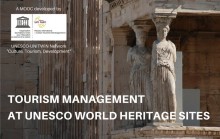
This MOOC “Tourism Management at UNESCO World Heritage Sites”, produced by the UNESCO-UNITWIN Network “Culture, Tourism, and Development”, provides an introduction to tourism at UNESCO World Heritage Sites. Moving from UNESCO’s principles and doctrines, the MOOC covers Communication Technologies, Economy, Management and … Continue reading

On Dicember 1st and 2nd 2017, the Institut für Museumsforschung Staatliche Museen zu Berlin hosted the REACH Kick-off Meeting, organized by partner SPK. The REACH project is based on the proposition that Cultural Heritage (CH) plays an important role in … Continue reading

The CyArk 500 Challenge has the ambitious goal to digitally preserve 500 cultural heritage sites within the next five years. Heritage sites are a significant part of our collective memory and we are losing them at an alarming rate, due … Continue reading

The Europeana Network Association AGM 2017 took place on 6 December in Milan, where it was possible for attendants to meet colleagues and peers to exchange professional knowledge and get inspired in a lovely museum surrounding in the run up … Continue reading
The November 2017 updates for Acrobat DC, now available from Adobe, include some significant news for those who pay attention to ISO standards-adoption. Among the enhancements of the preflight tools there is also PDF/A compatibility with veraPDF. Now, Acrobat preflight tools can find and report issues that are not compatible with the veraPDF tests. Continue reading
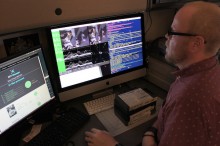
This is the nineth in a series of interviews with people using MediaConch within their institutions. Brian is the head of the Digital Production Unit for the Special Collections & Archives Research Center at Oregon State University Libraries & Press. He is using MediaConch for validation and policy checking during the quality control process for the video files. He also used DPF Manager and veraPDF for quality control of TIFF and PDF files. Continue reading
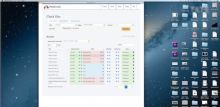
This is the eight in a series of interviews with people using MediaConch within their institutions. Patricia Falcao is a time-based media conservator at Tate. She uses MediaConch to check files that have resulted from migration. Francesca Colussi is one of the senior time-based media conservation technicians at Tate. She mainly uses MediaConch both for local policy checking and in-house quality control, as a comparison and ‘problem solving’ tool to spot anomalies in exhibition format files. Continue reading





















